
By David Rousseau, Chemist, M.Sc.
Visible light is a wave, just like microwaves, X-rays, UV rays and radio waves. They are called electromagnetic waves and are generally represented as a sinusoid, similar to a jumping rope that is waved. Contrary to the other kinds of electromagnetic waves, light can be very effectively processed by our brain. This little bandwidth is extremely well interpreted by our brain and produces a physical representation: sight.
For the other kinds of waves, material support or equipment are required to permit their visualization. The best examples are radiography and thermography.

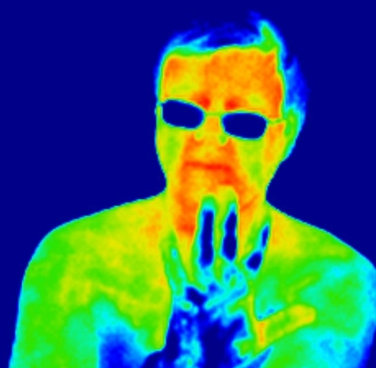
Thermography
(infrared visualization)

Radiography
(X-ray visualization)
Sometimes, our brain’s capacity to treat light results in too much information. In some cases, less light is preferable for a more efficient information treatment. Therefore, in an effort to lower the amount of information entering our brain, we instinctively squint our eyes or wear sunglasses, for example. Today, we can even completely eliminate certain stray light information by wearing polarized glasses, which in turn greatly enhance our sight comfort.
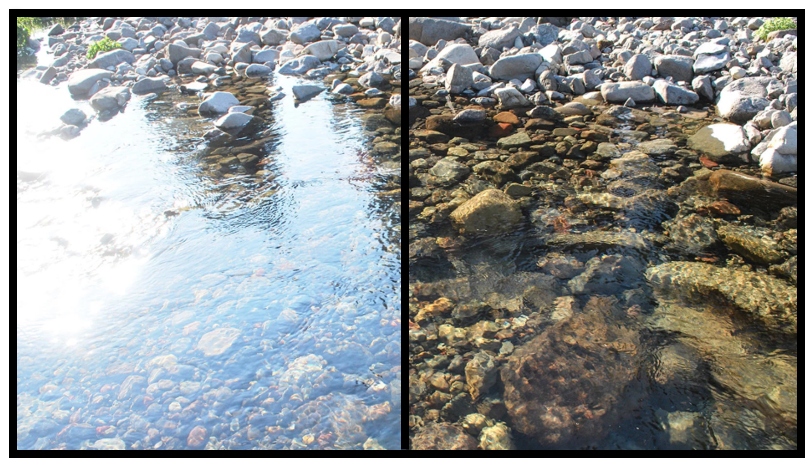
Without polarized glasses
With polarized glasses
What is polarization?
What is parasitic light information?
Polarization
Natural sunlight is depolarized which means that the light rays that reach us do not have a specific orientation. Going back to our example of the waving skipping rope, we can represent the light waves as follows:
We see here four (4) light waves of the same amplitude and frequency, going in the same direction, but without any privileged orientation, just as if we were to wave the rope in different orientations (up to down, left to right or diagonally). This is called an unpolarized light wave.
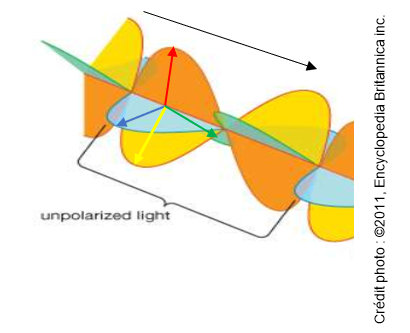
“Unpolarized” is the term used to mean “without any privileged orientation.” If we position ourselves in the axis of these light waves, we see them point in different directions.
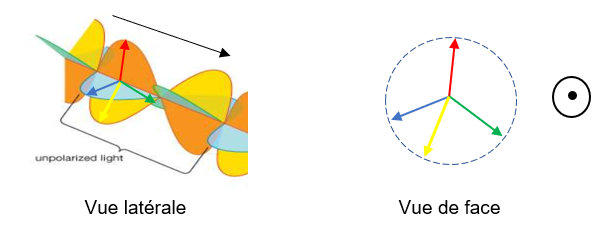
The above right drawing shows four (4) waves among the infinite number of waves reaching us from all possible orientations. Therefore, an unpolarized sunray is represented like this:
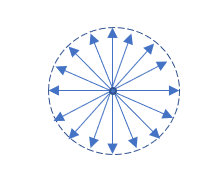
All these waves form an unpolarized light ray.
Parasitic Light Information
Parasitic light information can be defined as radiance reflecting on an object that doesn’t give any information such as colour, texture or shape about it. This light, which is entirely reflected by the surface, like a mirror, parasites the useful information about the objects.
When this light is reflected on a horizontal surface (such as water, roads or snow on ski slopes), it becomes naturally polarized within a privileged axis: the horizontal axis.
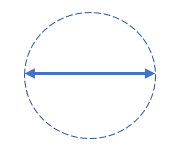
This therefore results in a huge quantity of information reflected in this axis, causing a bright glare.
At a precise angle (Brewster’s angle), which primarily depends on the surface the light is reflected on, the light is reflected at 100% on the horizontal axis, causing a maximum glare. This happens on the sea or the road when the sun is relatively low in the sky, because an angle of approximately 30° is needed to reach the maximum effect. But this phenomenon is more pronounced in the mountains and can happen at any time of the day, because the surfaces being reflected are abrupt, bearing variable angles.
Standard, unpolarized sunglasses will attenuate the amount of global light that reaches us, but without “targeting” the reflected parasitic rays. Therefore, parasitic light remains an important and significant proportion and continues to mask pertinent information needed by our brain.

Polarized sunglasses, on the other hand, are designed to allow only polarized light to pass through in the vertical direction (↨) and they will therefore completely block this parasitic information.
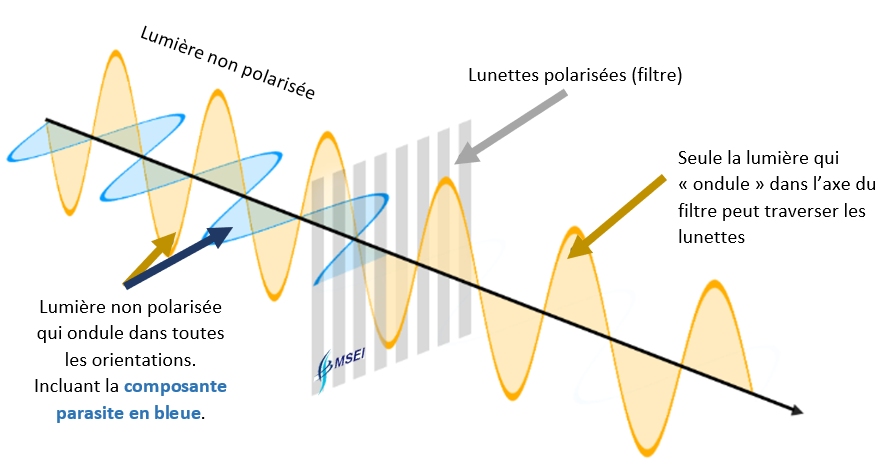
The polarized glasses are always polarized in the vertical direction (↨), because it is the parasitic reflections coming from horizontal surfaces which are the most disturbing in the vast majority of the cases (surface of the water in a boat or surface of the road in a car).
If you are an amateur photographer, you already know polarized filters mounted on cameras are rotative. The reason is that it is imperative that the filter angle be adjusted to keep the polarization in the desired axis (↨) in order to take pictures in different positions.
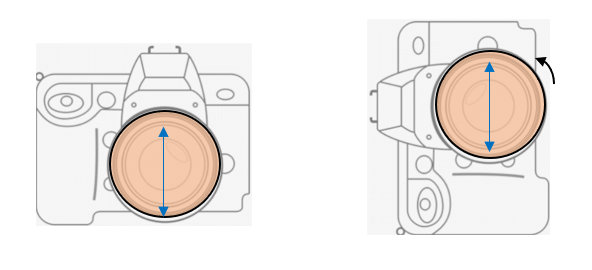
Or cut the reflection (parasitic light) of a non-horizontal surface, like a window for example, and making it possible to photograph through it.
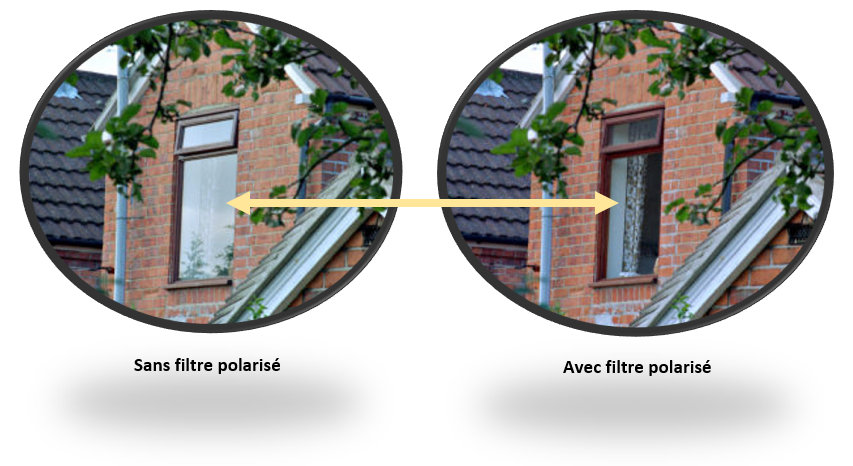
This effect of natural reflection of light on the windows gives a certain intimacy at the residential level but poses problems at the commercial level. Polarized filters are also installed on certain store windows to avoid this type of reflection and thus allow passers-by to clearly see the displays inside the stores at any time of the day.
Science is everywhere!
You may also have noticed that some screens appear black when viewed with polarized glasses. This is because these screens emit polarized light that is exactly 90° from the polarization angle of your glasses. A mechanism occurs that is identical to that of polarized light reflected from the surface of the water, but this time the effect is undesirable.
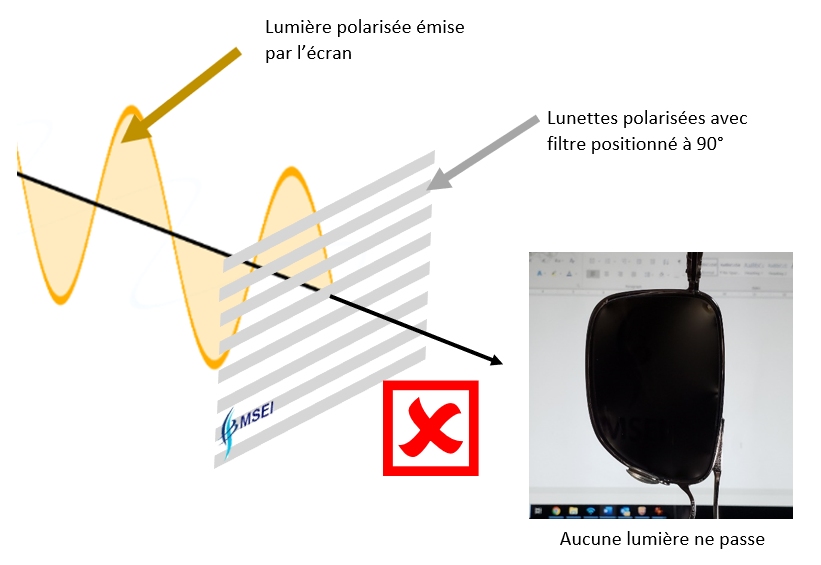
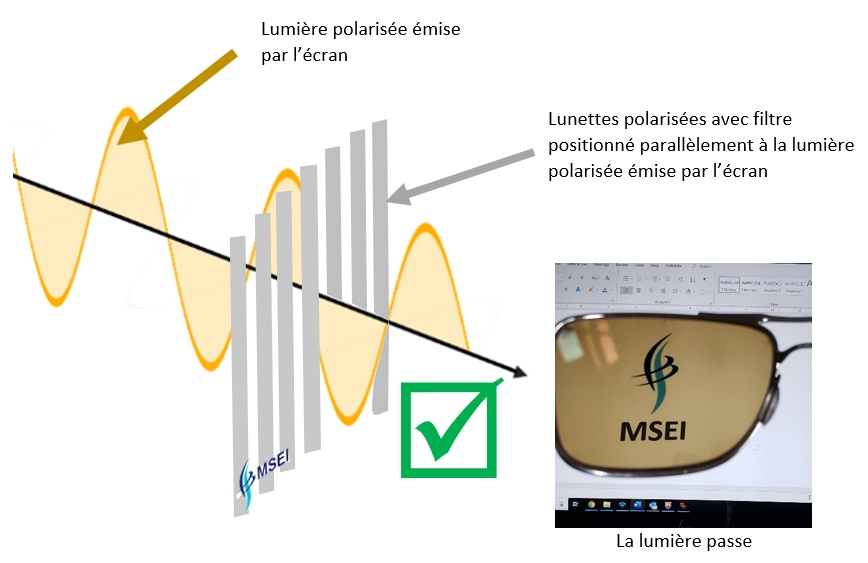
Fortunately, the majority of screens, namely those found in cars, emit polarized light at an angle that permits them to be readable with sunglasses.
The next time that you are wearing your sunglasses in the car, simply turn your head to determine what is the polarization angle of your screen.
There it is! Polarization bears no more secrets for you … almost!
For any further questions, do not hesitate to contact your specialist:
David Rousseau, Chemist, M.Sc.
Scientific Expert – Senior Project Manager Email: drousseau@msei.ca
Phone: 514-679-2058
